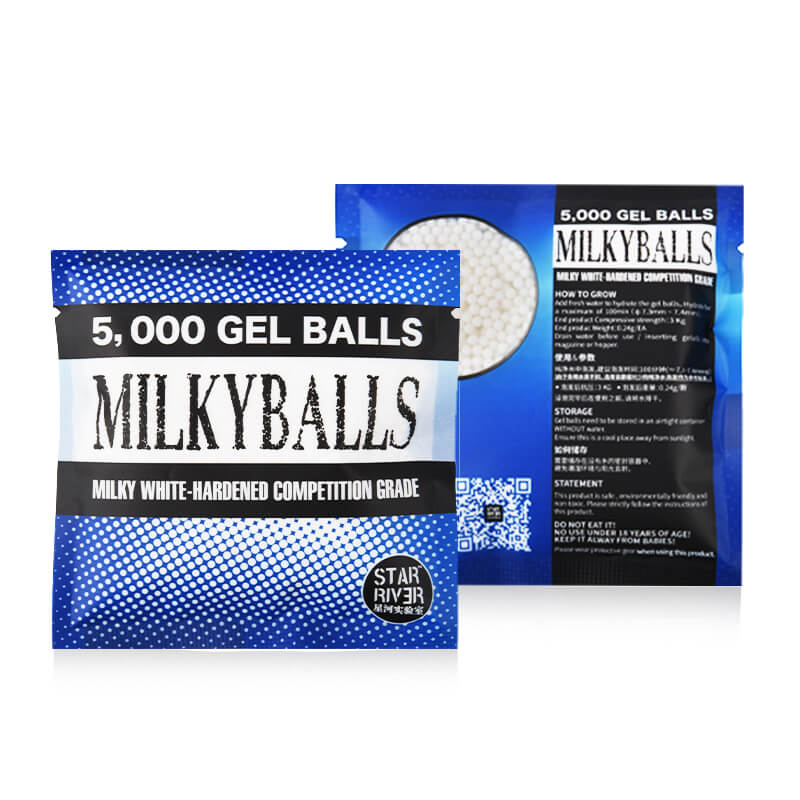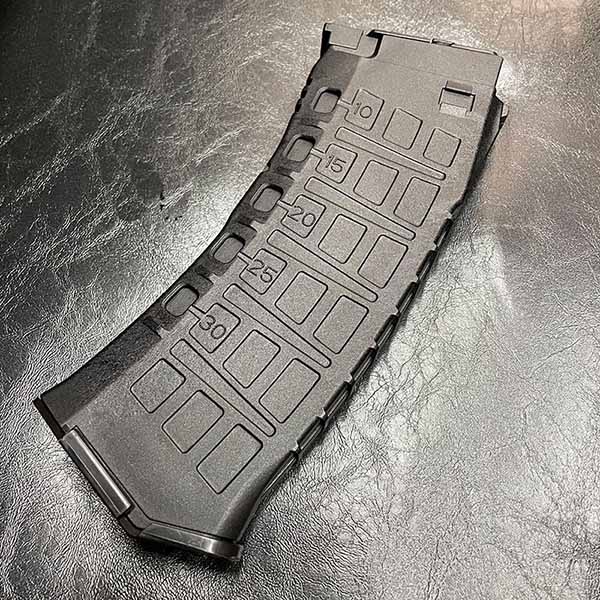Gel Blaster Troubleshooting Guide for Common Issues and Problems2022-10-31
Having issues with your gel blaster toy?
Is your gel blaster suddenly experiencing jams or has it stopped feeding gels balls all together? Like all toys, gel blasters can sometimes experience issues – and fortunately for users, most are preventable. Here’s a trouble-shooting guide with some of the most common issues found in gel blaster toys and ways to potentially resolve (or avoid) them!
here is a video to show an example of a gel blaster without any issues and problems:
Why is my gel blaster jamming?
Tip: check your gels!
Jams are of one the most common issues experienced in gel blasters. It can happen to all types, from brand new stock blasters bought off the shelf to custom-build blasters of higher specs. Of course, having some jams here and there when using a toy like this is normal, however it can be extremely frustrating and unusual if it occurs more often than not.
So, why does this happen? Well, we would first recommend checking your gel balls.
Here are a few things to consider:
- How long were the gel balls hydrated for?
- What type of gel balls are you using?
- Are these gels suitable for your blaster?
- How old are the gel balls?
To decrease your odds of experiencing a jam, make sure to use fresh gels and to strictly follow the packaging instructions. They need to be hydrated in the correct amount of water for the right amount of time. Over or under-soaking your gels can affect the consistency. Keep your eye on the clock or simply set an alarm, and once your gels are hydrated accordingly, drain all excess water and get blasting!
There are many type of gel balls available on the market, and oftentimes you will find that specific type of gels will be better suited to a certain type of blaster. Higher powered gel blasters will typically perform best when paired with harder gels, where stock gel blasters may perform better with standard milky-white gels. Most blasters will come stock with a small starter pack of gel balls, and usually these gels are clear and on the softer side. Failing to use the correct type of gel ball with your blaster can definitely increase the frequency of jams. It’s best to experiment, and try using the better quality gels!
In addition to this, gels stored over time will soften and change in size, which can also be a driving factor as to why you’re experiencing this issue. So always remember to use freshly hydrated gels for best performance!

Why is my battery not holding charge?
Tip: check your charger!
Most gel blasters in Australia are powered by lithium-ion or lithium-polymer batteries. These can be quite sensitive, and care is required to ensure the longevity. Battery powered gel blasters will typically come stock with the required charger, and for most this would mean a basic USB charging cord with inbuilt indication lights.
When on charge, these cords will flash red and green, and a solid green colour should show when full. The maximum charge time for most standard batteries is around 1-2 hours.
If you find your battery is failing to hold charge, or your charging cord is behaving out-of-norm, then this means either the battery or the charging cord has failed. Having a battery tester or a B3/B6 charger would definitely come in handy in this situation!
B3 chargers are fairly common, and are sold by most gel blaster retailers. With this type of charger, all three LED lights on front should show green when connected to power. If not, then the charger is faulty and a replacement is required. Once a battery is attached to a functioning B3 charger, the lights will show red to indicate the depleted cells. After 2 hours, if you find a cell is refusing to turn green, then this means the correlating battery cell is now dead. In this situation, a new battery is required.
Make sure to always follow the use, handling and care instructions with these batteries. As mentioned prior, they can be quite sensitive and are easily damaged by: overcharging, over discharging, or by keeping it connected to your blaster when not in use.
Why is my gel blaster not feeding any gels?
Tip: check your magazine!
There are a few potential factors which may lead to your toy blaster failing to feed gels, and of course there are many different type of gel blasters with varying methods of use. To see if the potential cause lies with something simple, here are a few things to check outlined below!
Most common causes of this issue:
- Incorrectly hydrated gel balls..
- Using unsuitable gels for that particular blaster type.
- Magazine is not 100% full prior to use, or is filled incorrectly.
- The blaster or the magazine is not primed (where applicable).
- Magazine or hopper may not be clipped in or aligned correctly.
- Magazine motor may not be functioning.
- Opposite mag terminals or loose wire.
As always, first thing to check is your gel balls first. They should be fresh, suitable to your blaster, and grown to the correct size. If you find your gel blaster is firing and making the correct sounds, however nothing will expel whilst shooting upright, then try testing it out by firing the blaster upside down. In this situation, if still no gels expel, it’s likely to be a magazine problem (typically a dead motor), in which case a replacement magazine may resolve the issue. Always thoroughly drain your gel balls prior to use, as excess water will lead to rust and damage your magazine motor.

Why does my gel blaster only shoot upside down?
Tip: fill your magazine until full!
This is commonly experienced when the magazine is not filled correctly. Almost all gel blaster magazines will have a trap door or side hatch, designed to open and allow the user to fill it with gels. The magazine should be 100% full prior to use, and the gels must always be filled through this trap door/side hatch. Using correctly hydrated gels is essential in resolving this issue as well.
Check to see if your gel blaster comes with a prime-function, where either a button needs to be pushed or a lever needs to be pulled to preload the gels for firing. Some blaster models will come with a manual push-prime on the actual magazine, in which case this button needs to be pushed until gels jump from the top of the mag prior to use.
Another common cause is the type of gel balls being used. Try different type of gels! As mentioned before, there is an array of gels available on the market – from heavier to standard milky whites, to softer clear or blue ones. You will find that certain gel balls may work better with a specific gel blaster model. Remember to always hydrated them strictly to instructions.
Should the issue prevail, try with a new magazine and then get your blaster checked by a professional/the retailer!
Why is my gel blaster firing weak?
Tip: it may be the tappet/return spring!
Gel blasters have many internal components which are essential in the smooth operation of the toy. If your gel balls are falling extremely short of the advertised shooting distance despite using suitable gels correctly hydrated, then it’s likely one of these internal components is faulty or no longer functioning as it should.
One of these essential parts is the tappet or return spring. A damaged or faulty return spring is typically the most common cause of this particular issue. It may not be correctly positioned, has become rusty, or has snapped from strain/use. Other potential causes of your gel blaster firing weak is a cracked or broken t-piece or an air-seal issue.
In this situation, it would be best to leave it to the professionals and get the toy properly assessed as fixing this from home would potentially involve full disassembly of the toy. Make sure to check your warranty period and applicable policy as well!
Why is my gel blaster making a weird sound?
Tip: do not disassemble your gel blaster!
If your gel blaster is making a strange whirring or grinding sound when the trigger is pulled, then it’s likely to be a stripped internal component (typically gear-related). This is applicable to gel blasters which have either plastic or nylon gears and internals.
Certain gel blasters will come with an adjustable screw found at the pistol-grip base plate. This is the motor height adjustment. In some cases, minor tinkering (tightening or loosening) of this screw can resolve the issue being experienced.
Of course, over time we can expect our gel blasters to experience some general wear, however it is not something which should occur straight out the box or shortly after using the toy. Should the issue prevails, it would be best to simply return the toy for assessment, or have a professional upgrade the gears for you.
Of course, we’re just touching on some of the more common issues here. Should you ever find yourself in a situation where the toy has completely malfunctioned or is experiencing some sort of major fault, we would recommend taking it straight back to the retailer and getting a professional to look at it.
Gel blaster toys have become increasingly popular here in the U.S! With many choosing to enjoy this toy as a hobby or sport, there are many fields now operating around USA running field games and events. To check where you can play gel blaster games, make sure to become a zhenduo blaster member and check the events calendar!
- Company Info
- About Us
- Contact Us
- Customer Reviews
- Blogs
- Brands
- YouTube Videos
- User Center
- FAQ
- Forget Password
- My Orders
- Tracking Order
- My Account
- Register
- Affiliate
- Company Policy
- Locations We Ship To
- Payment Methods
- Shipping Policy
- Refund Policy
- Privacy Policy
- Terms of Service
- Disclaimer
- Contact Us
ZHENDUO Electornics Technology LLC
Address: 7200 MISSOURI AVE,Denver,CO,United States,80202
Contact number: (626) 215-2450
Email address: xiewentao@zhenduo.email


